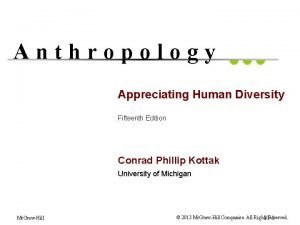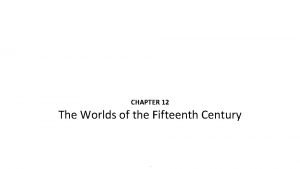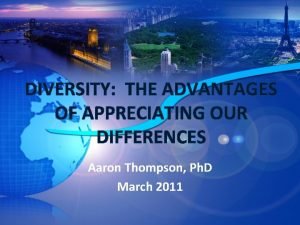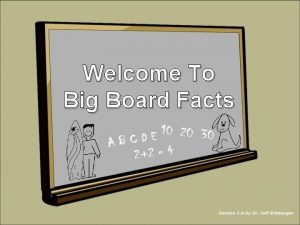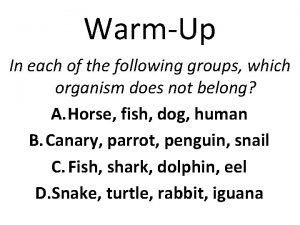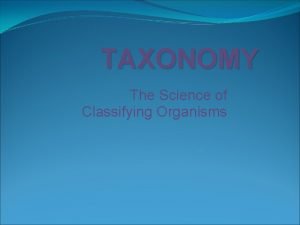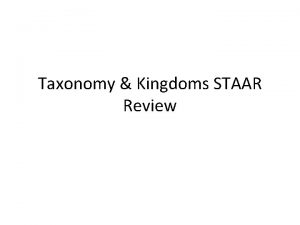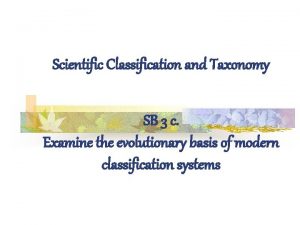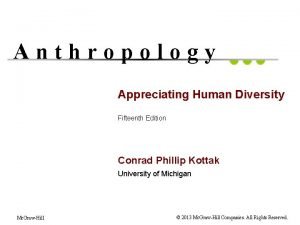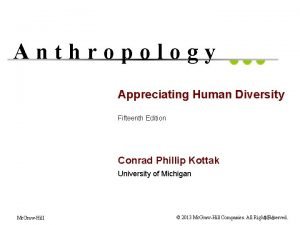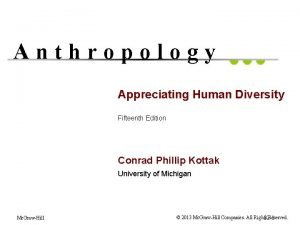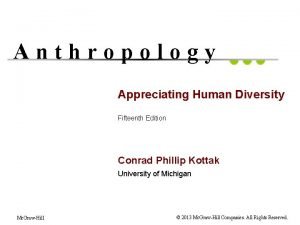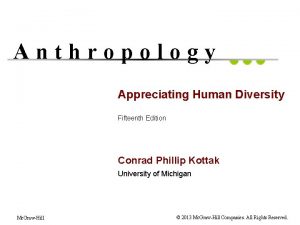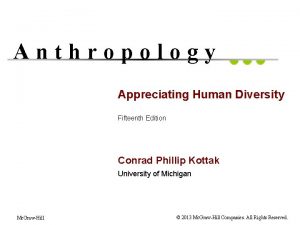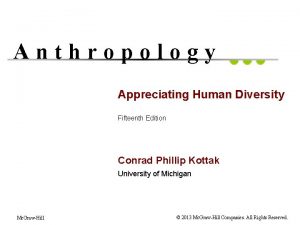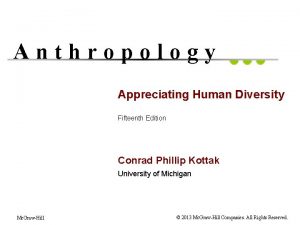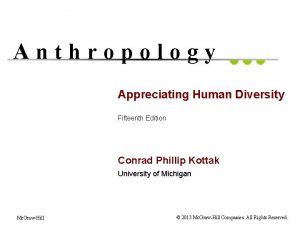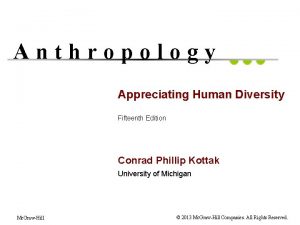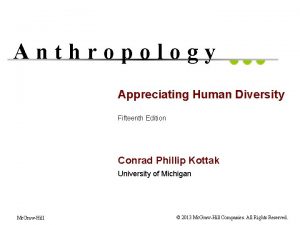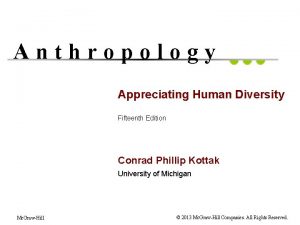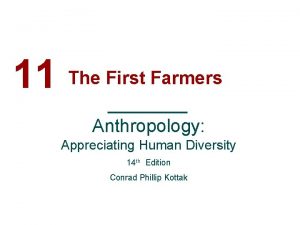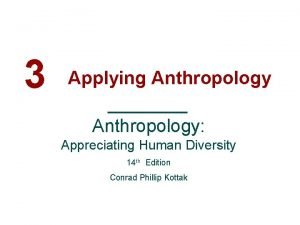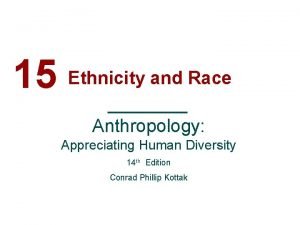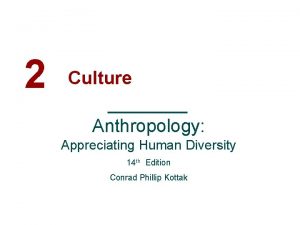Anthropology Appreciating Human Diversity Fifteenth Edition Conrad Phillip























- Slides: 23

Anthropology Appreciating Human Diversity Fifteenth Edition Conrad Phillip Kottak University of Michigan 6 -1

C H A P T E R HUMAN VARIATION AND ADAPTATION 6 -2

HUMAN VARIATION AND ADAPTATION • Race: A Discredited Concept in Biology • Human Biological Adaptation 6 -3

HUMAN VARIATION AND ADAPTATION • What is the race concept, and why have anthropologists rejected it? • How does natural selection work on contemporary and recent human populations? • Does biological adaptation occur during an individual’s lifetime? 6 -4

RACE: A DISCREDITED CONCEPT • Historically, scientists approached the study of human biological diversity in two ways: • Racial classification, now largely rejected • Explanatory approach 6 -5

RACE: A DISCREDITED CONCEPT • Racial classification: attempt to assign humans to discrete categories (purportedly) based on common ancestry • Human biological variation distributed gradually between populations is called clines • Human populations have not been isolated enough from one another to develop into discrete groups 6 -6

RACE: A DISCREDITED CONCEPT • Phenotypic traits (skin color) have been used for racial classification • Overly simplistic classification compatible with political use of race during the colonial period • Race kept white Europeans separate from African, Asian, and Native American subjects 6 -7

RACES ARE NOT BIOLOGICALLY DISTINCT • Problems with using a tripartite scheme • “Color based” racial labels are not accurate • Many populations don’t fit neatly into any one of the three “great races” • No single trait can be used as basis for racial classification • Phenotypic similarities and differences do not necessarily have genetic basis 6 -8

GENETIC MARKERS DON’T CORRELATE WITH PHENOTYPE • Conventional geographic “racial” groupings have about a 6% variation in genes • Humans are more alike genetically than other hominoids • Haplogroup: lineage or branch of a genetic tree marked by one or more specific genetic mutations • Long-term genetic markers exist, but they don’t correlate neatly with phenotype 6 -9

EXPLAINING SKIN COLOR • Traditional racial classification assumes biological characteristics are determined by heredity and are stable • Role of natural selection in producing variation in skin color offers explanatory approach to human biological diversity 6 -10

EXPLAINING SKIN COLOR • Skin color is a complex biological trait influenced by several genes • Melanin: a “natural sunscreen” produced by skin cells responsible for pigmentation • By screening out ultraviolet (UV) radiation from sun, melanin offers protection against a variety of maladies, including sunburn and skin cancer 6 -11

EXPLAINING SKIN COLOR • Before 16 th century, very dark-skinned populations lived in tropics: a belt extending about 23 degrees north and south of the equator • Outside the tropics, skin color tends to be lighter • Melanin confers a selective advantage on darker-skinned people living in the tropics 6 -12

EXPLAINING SKIN COLOR • Loomis: focused on role of UV radiation in stimulating vitamin D • Jablonski and Chaplin: explained geographic distribution of skin color involved effects of UV on folate, used to manufacture folic acid • Variation in human skin color: • Protects against all UV hazards • Provides an adequate supply of vitamin D 6 -13

RECAP 6. 1: Advantages and Disadvantages (Depending on Environment) of Dark and Light Skin Color 6 -14

THE AAA RACE PROJECT • AAA Race Project: “RACE Are We So Different? ” • Race is a recent human invention • Race is about culture, not biology • Race and racism are embedded in institutions and everyday life 6 -15

HUMAN BIOLOGICAL ADAPTATION • Abundant evidence exists for human genetic adaptation and evolution through selection working in specific environments • With thousands of human genes known, new genetic traits are being discovered every day 6 -16

GENES AND DISEASE • World Health Organization (WHO) report: about one billion people worldwide are affected by neglected tropical diseases • Malaria: 216 million • Schistosomiasis: more than 200 million • Filariasis: 120 million 6 -17

GENES AND DISEASE • Microbes major selective agent for humans, particularly before the arrival of modern medicine • After food production emerged 10, 000 years ago, infectious diseases posed a mounting risk and became foremost cause of human mortality • ABO blood groups vary in resistance to disease 6 -18

GENES AND DISEASE • In diseases for which there are no effective drugs, genetic resistance maintains significance • There is genetic variation in people’s susceptibility to HIV 6 -19

FACIAL FEATURES • Natural selection affects facial features • Long noses seem to be adaptive in arid areas and cold environments • Thomson’s nose rule: association between nose form and temperature for those who have lived for many generations in areas they now inhabit 6 -20

SIZE AND BODY BUILD • Bergmann’s rule: smaller of two bodies similar in shape has more surface area per unit of weight • Within warm-blooded animals, populations with smaller individuals in same species are more often found in warm climates • Allen’s rule: relative sizes of protruding body parts increase with temperature 6 -21

SIZE AND BODY BUILD • Human populations use different biological means of adapting to environmental stresses associated with high altitudes • Andeans • Tibetans • Ethiopians 6 -22

LACTOSE TOLERANCE • Phenotypic adaptation: adaptive changes that occur during an individual’s lifetime • Biochemical difference among human groups involves the ability to digest large amounts of milk • There is an adaptive advantage when foods are scarce but milk is available 6 -23
 Anthropology appreciating human diversity
Anthropology appreciating human diversity Performance appraisal in human resource management
Performance appraisal in human resource management Human resources department structure
Human resources department structure University physics with modern physics fifteenth edition
University physics with modern physics fifteenth edition What is classical menu sequence
What is classical menu sequence Chapter 12 the worlds of the fifteenth century
Chapter 12 the worlds of the fifteenth century Chapter 12 the worlds of the fifteenth century
Chapter 12 the worlds of the fifteenth century What does rally round the flag mean
What does rally round the flag mean Appreciating poetry notes
Appreciating poetry notes Appreciating drama
Appreciating drama Appreciate our differences
Appreciate our differences Genetic diversity vs species diversity
Genetic diversity vs species diversity Genetic diversity vs species diversity
Genetic diversity vs species diversity Using mis (10th edition) 10th edition
Using mis (10th edition) 10th edition Zulily case study
Zulily case study King phillip came over for good soup
King phillip came over for good soup Kpcofgs
Kpcofgs Organisms taxonomy
Organisms taxonomy King phillip came over from great spain
King phillip came over from great spain Dear king phillip came over
Dear king phillip came over King phillip came over for good soup
King phillip came over for good soup Philip bayard
Philip bayard Phillip gilley
Phillip gilley What kingdom is archaea in
What kingdom is archaea in
